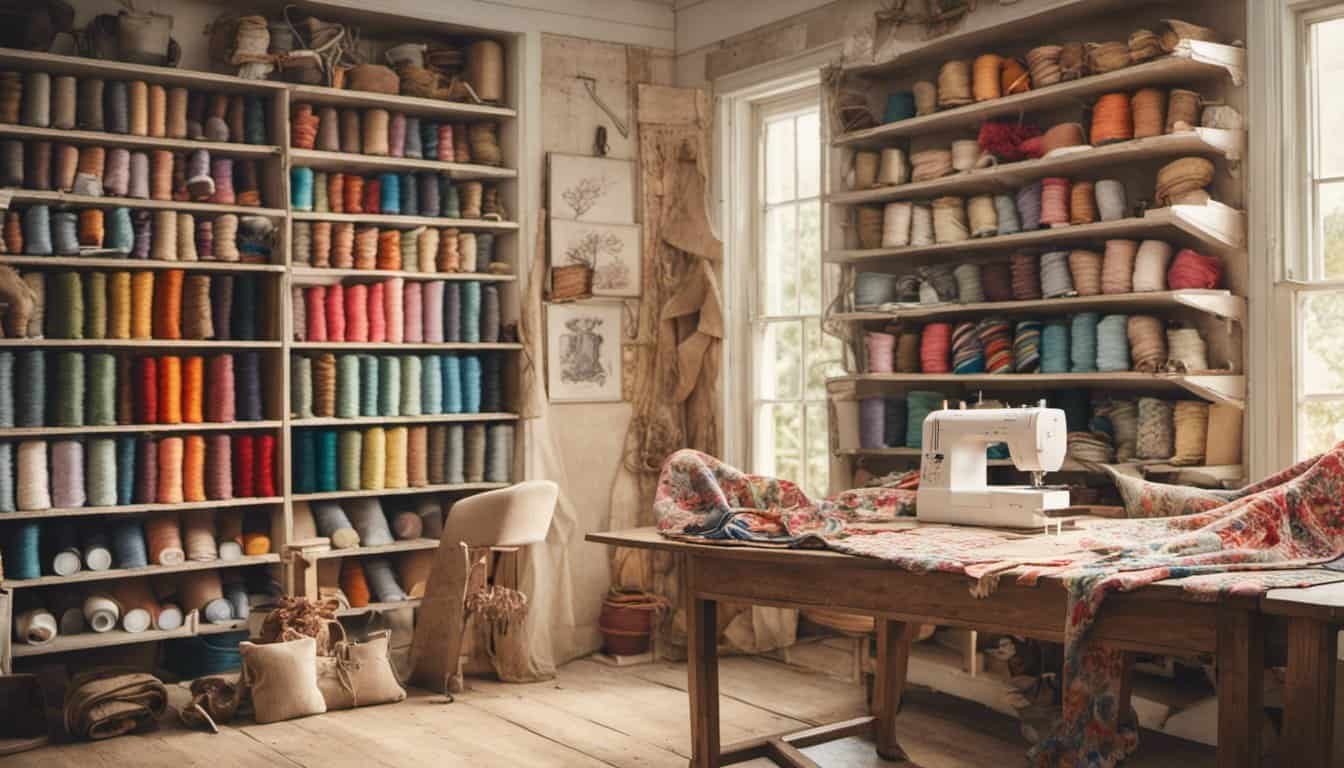Traveling is always an adventure, but keeping dirty clothes separate from clean ones can be a hassle. That’s where a handy travel laundry bag comes in! Instead of buying one, why not make your own? It’s a simple and satisfying DIY project that adds a personal touch to your travel essentials.
I love how sewing projects like this let me combine creativity with practicality. A travel laundry bag isn’t just functional—it’s also a fun way to use up fabric scraps or experiment with patterns. Plus, there’s something so rewarding about creating something uniquely yours.
Why You Should Sew Your Own Travel Laundry Bag
Sewing your own travel laundry bag combines practicality with creativity. It lets you customize size, fabric, and design to fit your travel needs. Store-bought options often don’t match the durability or aesthetic of a handmade solution. By sewing it yourself, you ensure the bag meets your exact preferences and lasts longer.
Customizing the bag means you can choose the right fabric for the job. For instance, lightweight cotton works well for quick trips, while water-resistant materials are better for damp or wet clothes. Adding features like drawstring closures or zippered compartments enhances usability. You save money by repurposing fabric scraps or using leftover materials from other projects.
Creating your own travel laundry bag also helps reduce fabric waste. Sewing offers an eco-friendly alternative to purchasing mass-produced items. With personally chosen materials, you avoid synthetic linings or harmful finishes often found in commercial products. Personalized colors or patterns make your bag more distinctive and enjoyable to use.
This DIY project is beginner-friendly yet rewarding for all skill levels. Even simple stitches produce a durable, functional item. Advanced sewers can experiment with embroidery, appliqué, or other decorative techniques for added flair. Sewing also gives me a chance to practice skills while creating a useful product I can take anywhere.
Materials And Tools Needed
Choosing the right materials and tools makes sewing a travel laundry bag simpler and more efficient. To ensure durability and functionality, focus on high-quality fabrics, threads, and essential sewing tools.
Fabrics And Thread Options
Lightweight cotton fabrics work well for short trips, as they’re breathable and easy to sew. For damp or wet clothes, I recommend water-resistant options like nylon or polyester blends. Repurposed fabric scraps add personality and reduce waste. Select medium to heavy-duty thread in a coordinating color for cleaner seams and extra durability.
Essential Tools For Sewing
Basic sewing tools are all you need for this project. A sewing machine ensures straight, even stitches, though hand-sewing works for smaller bags. Sharp fabric scissors or rotary cutters are ideal for precise cutting. Use a ruler, measuring tape, and fabric marking chalk for accuracy. Choose pins or clips to secure the fabric during assembly, and keep an iron handy to press seams for a polished finish.
Step-By-Step Instructions For Sewing A Travel Laundry Bag
Creating a travel laundry bag involves simple techniques, making it an excellent project for both beginners and seasoned sewing enthusiasts. Below are detailed steps to guide you through the process.
Measuring And Cutting The Fabric
I start by determining the desired bag size. For a standard-sized laundry bag, I use fabric dimensions of 18 inches by 24 inches. Larger sizes work well for extended trips, while compact dimensions suit short getaways.
Using a fabric marker or tailor’s chalk, I mark the measurements directly on the fabric. Sharp fabric scissors help me cut out two identical rectangles. If I’m using patterned fabric, I ensure the design aligns properly before cutting.
Assembling And Sewing The Bag
To assemble, I place the two fabric pieces together with the right sides facing inward. Pinning or clipping the edges keeps the layers aligned during sewing.
I sew along three edges—two long sides and one short side—using a ½-inch seam allowance. A straight stitch works well for this step. For added durability, I often finish the raw edges with a zigzag stitch or a serger to prevent fraying.

After sewing, I press the seams open with an iron for a neat finish. Then, I turn the bag right-side out and carefully poke out the corners for a clean shape.
Adding A Drawstring Closure
For a functional closure, I create a drawstring channel. I fold the open edge of the bag inward by ¼ inch, press with an iron, then fold again by 1 inch to form the channel. I pin this fold in place and sew along the bottom edge, leaving a small opening to thread the drawstring.
Using a safety pin or bodkin, I thread a cord or ribbon through the channel. Once it’s fully inserted, I tie the two ends of the drawstring together in a secure knot.
This simple addition makes the bag easy to open and close while keeping clothes securely contained.
Tips And Tricks For A Professional Finish
Creating a travel laundry bag doesn’t just involve functionality—it’s about achieving a polished, professional look. Here are ideas to elevate your DIY project.
Choosing The Right Stitch
« Master Sewing a Fabric Hair Scrunchie Set: Easy Tips for Stylish DIY Accessories
How to Make a Fabric Trivet for Hot Dishes: Easy DIY Craft for Your Kitchen »
Selecting the best stitch enhances durability and appearance. For seams, I prefer a straight stitch with a 2.5mm stitch length for lightweight cotton or a longer 3-3.5mm length for thicker fabrics like nylon. To prevent fraying, I use a zigzag stitch or an overlock stitch along the raw edges, especially for woven fabrics. French seams are an elegant option for an enclosed seam finish, adding strength without needing a serger. It’s essential to match the thread type to your fabric; polyester thread offers flexibility for stretch fabrics, while cotton thread works well for natural fibers.
Customizing Your Laundry Bag
Adding personal touches creates a unique design. I often sew a small interior pocket for items like detergent sheets or delicates. Using decorative stitches around the drawstring channel or on the bag’s edges adds flair—I choose floral or geometric designs for a vibrant look. Experimenting with color-blocked fabric or appliqué can make the bag stand out. When practicality is key, I integrate grommets for reinforced drawstring holes or sew-in labels for organization. Personalization options like embroidery or fabric paint contribute distinct details that align with travelers’ styles.
Benefits Of A DIY Travel Laundry Bag
Sewing a travel laundry bag offers practicality and creative freedom. By making my own, I guarantee the exact size and design that suits my travel needs. Store-bought bags often compromise on longevity or aesthetics, but a handmade one combines both.
A DIY travel laundry bag ensures durability. Using high-quality materials, like water-resistant nylon or sturdy cotton, prevents wear and tear during frequent use. Adding reinforcements at stress points enhances its robustness.
Customizing the bag improves functionality. Features like drawstring closures allow easy access, while zippered compartments provide security for damp or small items. Personal touches like embroidered designs or patterned fabrics make each bag unique.

This project promotes sustainability. Utilizing fabric scraps reduces waste while repurposing old textiles creates something new and practical. Hand-sewing avoids the need for energy-intensive manufacturing, aligning with eco-friendly choices.
Crafting a laundry bag is cost-effective. By reusing materials or purchasing fabric selectively, I save money while avoiding the expense of mass-market products. The ability to repair or modify the bag ensures extended usability.
Creating something by hand also fosters a rewarding sense of accomplishment. Whether it’s perfecting my stitching or experimenting with design details, the skills gained during the process enhance my crafting journey.
Conclusion
Sewing a travel laundry bag is such a rewarding project. It’s practical, personal, and a great way to express creativity while honing sewing skills. Plus, there’s something so satisfying about turning fabric scraps into something both functional and beautiful.
Whether you’re a beginner or a seasoned sewer, this project offers endless possibilities for customization. You get to create something that’s not only useful for your travels but also uniquely yours. And knowing you’ve contributed to a more sustainable approach by reducing waste makes it even better.

So grab your fabric, fire up your sewing machine, and enjoy the process. There’s nothing quite like the joy of making something with your own hands that’ll be part of your adventures for years to come.

















